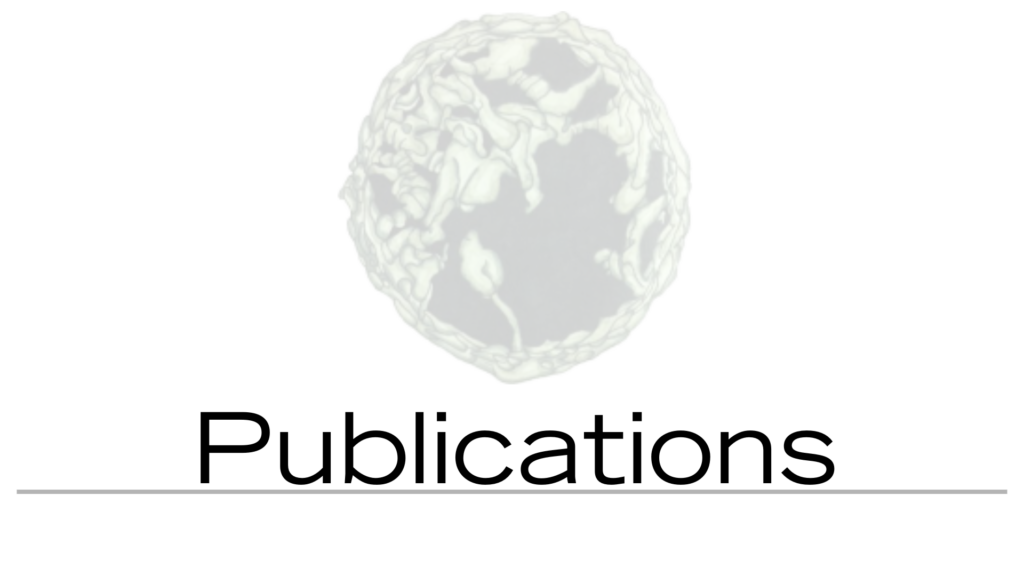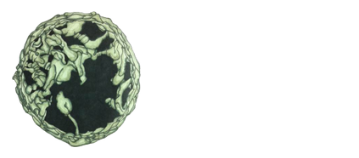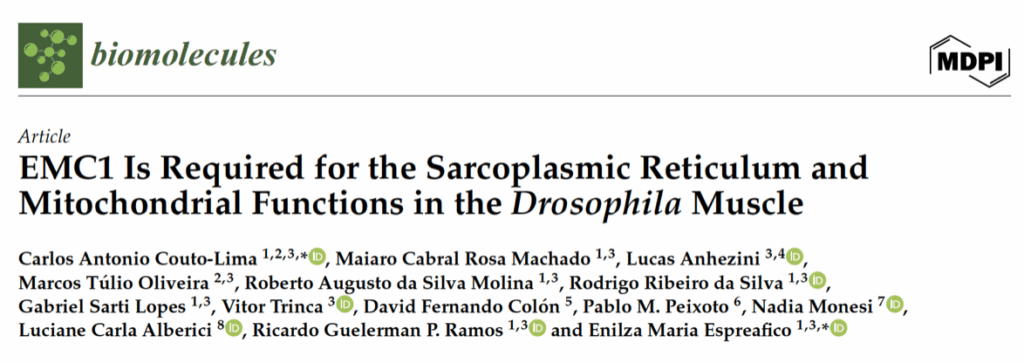
Mitochondrial ROS modulate presynaptic plasticity in the drosophila neuromuscular junction
Could a burst of energy from tiny brain cell powerhouses help shape how we think and learn? Our research reveals that reactive oxygen species (ROS)—chemicals often linked to cell damage—can actually enhance communication between neurons. Using fruit flies and a mix of cutting-edge tools, we showed that triggering ROS from mitochondria in motor neurons boosts synaptic activity, without altering structure or using known pathways like Wnt. This surprising effect was blocked by an antioxidant enzyme, pointing to hydrogen peroxide as a key player. These results uncover a new, beneficial role for mitochondrial ROS in brain signaling and plasticity, offering a fresh perspective on how neurons adapt and communicate.
EMC1 Is Required for the Sarcoplasmic Reticulum and Mitochondrial Functions in the Drosophila Muscle
How do our muscles stay strong and coordinated? A little-known protein called EMC1 may be a key player. We found that EMC1, which helps build and maintain cellular membranes, is essential for healthy muscle structure and function in fruit flies. When EMC1 was removed from muscle cells, the flies became weak, poorly coordinated, and often didn’t survive to adulthood. Their muscle fibers were misshapen, calcium levels were out of balance, and their mitochondria were damaged and inefficient. Restoring EMC1 reversed these problems. Our findings suggest EMC1 plays a crucial role in maintaining muscle health and energy, offering new insights into rare human diseases linked to EMC1 mutations.
The mitochondrial ATP synthase is a negative regulator of the mitochondrial permeability transition pore
A long-standing mystery in cell biology is the identity of a deadly channel in mitochondria, the permeability transition pore (mPTP), which opens under stress and triggers cell death. One major suspect has been the mitochondrial ATP synthase, the enzyme that makes most of our cellular energy. But our new findings turn that idea on its head. Using cells, heart tissue, and live mice, we show that ATP synthase helps keep mPTP closed. When ATP synthase is missing, cells are more vulnerable to calcium overload and heart damage. This suggests ATP synthase protects mitochondria from destructive pore opening, offering new clues for therapies targeting heart disease and other conditions linked to mitochondrial dysfunction.
Science Advances 2019
The mitochondrial permeability transition pore (MPTP) has resisted molecular identification. The original model of the MPTP that proposed the adenine nucleotide translocator (ANT) as the inner membrane pore-forming component was challenged when mitochondria from Ant1/2 double null mouse liver still had MPTP activity. Because mice express three Ant genes, we reinvestigated whether the ANTs comprise the MPTP. Liver mitochondria from Ant1, Ant2, and…
Frontiers in Physicology 2019
The TIM23 complex is a hub for translocation of preproteins into or across the mitochondrial inner membrane. This dual sorting mechanism is currently being investigated, and in yeast appears to be regulated by a recently discovered subunit, the Mgr2 protein. Deletion of Mgr2p has been found to delay protein translocation into the matrix and accumulation in the inner membrane. This result and other findings suggested that Mgr2p controls the lateral release of…
Aging Cell 2018
Mounting evidence suggests that mitochondrial dysfunction plays a causal role in the etiology and progression of Alzheimer’s disease (AD). We recently showed that the carbonic anhydrase inhibitor (CAI) methazolamide (MTZ) prevents amyloid β (Aβ)-mediated onset of apoptosis in the mouse brain. In this study, we used MTZ and, for the first time, the analog CAI acetazolamide (ATZ) in neuronal and cerebral vascular cells challenged with Aβ, to clarify their protective
Mol. Neurod. 2017
Mitochondrial dysfunction has been linked to the pathogenesis of amyotrophic lateral sclerosis (ALS) and frontotemporal lobar degeneration (FTLD). Functional studies of mitochondrial bioenergetics have focused mostly on superoxide dismutase 1 (SOD1) mutants, and showed that mutant human SOD1 impairs mitochondrial oxidative phosphorylation, calcium homeostasis, and dynamics. However, recent reports have indicated that…
JOBB. 2017
The discovery of very large channels in the two membranes of mitochondria represented an astonishing finding and a turning point in the awareness of these conspicuous energy-generating organelles. Sizable channels are at the crossroads of important cellular pathways and mitochondrial functions like biogenesis, signaling, secretion, compartmentalization or apoptosis. The integrative approach that combines electrophysiological methods with biochemical and genetic…
JOBB. 2017
Mitochondrial Apoptotic Channel inhibitors or iMACs are di-bromocarbazole derivatives with anti-apoptotic function which have been tested and validated in several mouse models of brain injury and neurodegeneration. Owing to the increased therapeutic potential of these compounds, we sought to expand our knowledge of their mechanism of action. We investigated the kinetics of MAC inhibition in mitochondria from wild type, Bak, and Bax knockout cell lines using patch…
Front Oncol. 2015
Cancer transformation involves reprograming of mitochondrial function to avert cell death mechanisms, monopolize energy metabolism, accelerate mitotic proliferation, and promote metastasis. Mitochondrial ion channels have emerged as promising therapeutic targets because of their connection to metabolic and apoptotic functions. This mini review discusses how mitochondrial channels may be associated with cancer transformation and…










